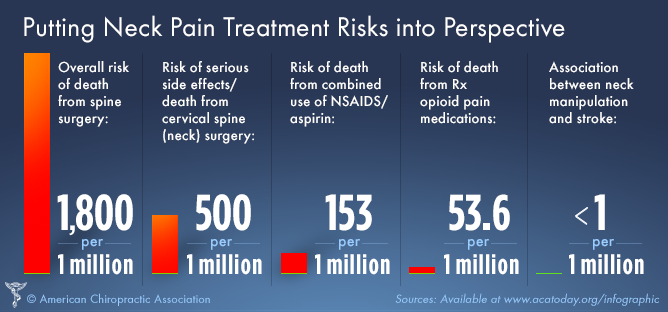Translating Back Pain: What It Discloses About Your Wellness And Typical Symptoms To Look For
Translating Back Pain: What It Discloses About Your Wellness And Typical Symptoms To Look For
Blog Article
Posted By-Hamilton Jensen
If you're experiencing pain in the back, your body may be trying to tell you something more than just pain. The method your back really feels can supply beneficial hints concerning your total well-being. Recognizing the particular type of pain you're feeling and any kind of coming with signs and symptoms is vital to unwinding the mystery behind your discomfort. Allow's explore the typical conditions and symptoms associated with various sorts of back pain to shed light on what your body may be signaling.
Types of Neck And Back Pain
When it comes to neck and back pain, there are different kinds that you may experience. One typical kind is muscle pain, frequently triggered by overuse, pressure, or injury to the muscle mass and tendons sustaining the spinal column. This type of pain can vary from mild pain to serious and incapacitating pain.
An additional type is nerve pain, which can arise from problems like herniated discs or sciatic nerve pain. Nerve discomfort usually provides as a sharp, shooting sensation that radiates down the leg.
Joint discomfort in the back can come from issues like arthritis or sacroiliac joint dysfunction. This sort of discomfort is usually really felt in the reduced back and can be exacerbated by certain movements.
Additionally, pain in the back can be related to structural troubles such as spine stenosis or vertebral fractures. Understanding the sort of neck and back pain you're experiencing is crucial in establishing the suitable treatment and management techniques.
Common Symptoms to Expect
Relocating beyond the various sorts of pain in the back, it is essential to acknowledge the typical signs that can indicate underlying issues.
Persistent neck and back pain that aggravates with motion or at night might show a much more major problem. Discover More or prickling in the legs or feet, specifically when accompanied by weakness, may point to a nerve-related problem. If you experience unexpected weight-loss together with pain in the back, it could be an indicator of a more systemic problem.
Take notice of any kind of changes in bladder or bowel function, as this could be linked to spine compression. Fever, chills, or evening sweats along with neck and back pain might indicate an infection. Watch out for pain that emits down one or both legs, potentially a measure of sciatic nerve pain.
Health Conditions Linked to Neck And Back Pain
If you suffer from pain in the back, it's critical to comprehend the prospective health problems connected to this pain. Back pain can be a signs and symptom of numerous underlying concerns, consisting of muscle pressures, herniated discs, osteoarthritis, back constriction, and even problems like kidney rocks or infections.
Muscular tissue strains are common and typically arise from raising hefty objects or sudden movements.
Herniated discs take place when the soft cells in between vertebrae protrudes, creating nerve irritation.
Osteoarthritis, a degenerative joint disease, can lead to back pain as cartilage material wears down.
Spinal constriction, the narrowing of the spine canal, can put pressure on nerves.
Kidney rocks may cause extreme neck and back pain if they relocate into the urinary tract.
Infections like back osteomyelitis can likewise manifest as pain in the back. Understanding https://chiropracticandwellnesscl84051.get-blogging.com/32611538/wishing-to-find-remedy-for-pain-in-the-back-at-work-discover-useful-pointers-to-browse-your-day-easily-and-increase-performance can aid you seek appropriate medical care and monitoring for your back pain.
Conclusion
So, following time your back injures, take note of the sort of pain and coming with signs and symptoms. Maybe a signal from your body about underlying health conditions like muscular tissue stress, nerve issues, joint issues, and even architectural concerns. By identifying these signs, you can take proactive steps to attend to the source of your pain in the back and improve your general wellness and health.
